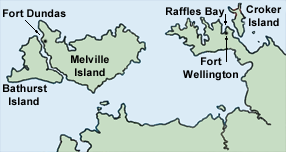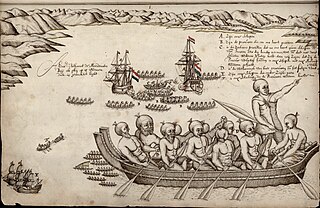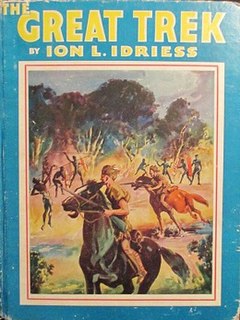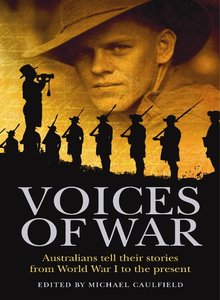 W
WThe United Australia Party held a leadership election on 18 April 1939, following the death in office of Prime Minister Joseph Lyons on 7 April. Robert Menzies narrowly defeated Billy Hughes – a former Nationalist prime minister – on the third ballot, following the earlier elimination of Treasurer Richard Casey and Trade Minister Thomas White. Another former prime minister, Stanley Bruce, had also been considered a leadership contender, but for various reasons he was never nominated. Menzies was not sworn in as prime minister until 26 April.
 W
WThe 1961 New South Wales earthquake occurred on 22 May in the Australian state of New South Wales (NSW). It reached a Richter magnitude of 5.5 and caused significant structural damage in a wide area.
 W
WA leadership spill of the Country Liberal Party (CLP) in the Northern Territory occurred on 13 March 2013, less than a year after the Terry Mills-led CLP opposition defeated the Paul Henderson-led Labor government at the 2012 election, winning 16 of 25 seats.
 W
WA by-election for the seat of Casuarina in the Northern Territory Legislative Assembly was held on 18 October 2014. The by-election was triggered by the resignation of Labor MP Kon Vatskalis, who retained the seat at the 2012 election with a 59.3 percent primary and two-party vote. It was held on the same day as the 2014 Vasse by-election in Western Australia.
 W
WThe 2024 Northern Territory general election is scheduled to be held on 24 August 2024 to elect all 25 members of the Legislative Assembly in the unicameral Northern Territory Parliament.
 W
WAndrew Thompson (1773-1810) was a prominent figure in early colonial Australian history. He arrived in Australia as a convict, but became the wealthiest settler of New South Wales. His occupations included police officer, magistrate, salt manufacturer at Scotland Island, shipbuilder, farmer and businessman. He was known to save several lives in the 1806 floods of the Hawkesbury River. Lieutenant-Governor Paterson rewarded Thompson with a 1000-acre grant at Minto which he named St Andrew's. Thompson did not recover from the effects of immersion in the 1809 floods of the Hawkesbury River, and died aged 37 at his home "Red House" at McGraths Hill.
 W
WEdmund la Touche Armstrong (1864–1946) was an Australian historian and librarian.
 W
WThe Black Sunday bushfires were a series of bushfires that broke out across South Australia on 2 January 1955. Extreme morning temperatures coupled with strong north-westerly winds contributed to the breakout of numerous fires in the Adelaide Hills, Jamestown, Waterloo, Kingston and Millicent. Most were caused by sparks from powerlines in the wind.
 W
WThe Chevert expedition was led and financed by William Macleay. The purpose of the expedition was to collect natural history samples from New Guinea and the Torres Strait. The Chevert sailed from Sydney on May 18, 1875 and returned in September that year. Scientific specimens collected included approximately 1,000 birds, 800 fish, reptiles, insects, molluscs, plants and ethnographic objects.
 W
WThe Commonwealth of Thieves: The Story of the Founding of Australia is a popular history book written by Thomas Keneally published in 2005.
 W
WDiscoveries in Australia; with an account of the coasts and rivers explored and surveyed during the voyage of H.M.S. Beagle, in the years 1837-38-39-40-41-42-43, by command of the Lords Commissioners of the Admiralty. Also a narrative of Captain Owen Stanley's visits to the islands in the Arafura Sea., widely known as Discoveries in Australia, is an 1846 two-volume work by John Lort Stokes. It comprises the edited journals of the explorations and surveys, both maritime and inland, of Stokes and other members of the crew of HMS Beagle, during a surveying expedition in Australia that lasted from 1837 to 1843. The work is of immense historical significance, as a great many places in Australia were discovered during the expedition, and the names and locations of these places were published for the first time in Discoveries in Australia.
 W
WThe Easter Group is the central of three groups of islands that make up the Houtman Abrolhos island chain. Nominally located at 28°44′S 113°46′E, it is about 20 kilometres by 12 kilometres, and consists of a number of islands includingRat Island Wooded Island Morley Island Suomi Island Alexander Island. Unlike the other groups the Easter Group has few shipwrecks. The group is part of the Houtman Abrolhos Important Bird Area, identified as such by BirdLife International because of its importance for supporting large numbers of breeding seabirds.
 W
WThe Eastern Victorian alpine bushfires were a series of bushfires in 2003 that burnt in the Alpine National Park and Mount Buffalo National Park in north-eastern Victoria, Australia. The bushfire started with eighty-seven fires that were started by lightning in the north east of Victoria on 8 January 2003. Eight of these fires were unable to be contained and joined together to form the largest fire in Victoria since the 1939 "Black Friday" bushfires.
 W
WFort Wellington was the name of a short-lived British settlement established in 1827 at Raffles Bay, on the northern side of the Cobourg Peninsula of what is now the Northern Territory of Australia, which was abandoned in 1829. It was the second of a series of four such abortive settlement attempts in Australia's Top End, the first being Fort Dundas (1824–1828) on Melville Island, the third Fort Victoria or Victoria Settlement, at Port Essington (1838–1849) on the Cobourg Peninsula, and the fourth at Escape Cliffs (1864–1867) near the mouth of the Adelaide River.
 W
WIsaack Gilsemans, was a Dutch merchant and artist.
 W
WGold Escorts were common across Australian goldfields, transporting mined and processed material from mines to banks and mints across the country.
 W
WThe Great Trek: One of the Greatest Feats in Australian Exploration is a 1940 book by Ion Idriess about Francis and Alex Jardine's 1864 trek in the northern Cape York Peninsula, from Rockhampton to Somerset in 1864.
 W
WHeadhunters of the Coral Sea is a 1940 book by Ion Idriess about Jack Ireland and Will d'Oyly, two survivors of the 1834 wreck, the Charles Eaton.
 W
WHellfire: The Story of Australia, Japan and the Prisoners of War is a history book written by Australian journalist and author Cameron Forbes published by Macmillan Publishers in 2005. It tells the stories of Australian prisoners of war of the Japanese during the Second World War, with particular focus on the Burma Railway.
 W
WMan Tracks, with the mounted police in the Australian Wilds is a 1935 book by Australian author Ion Idriess about the mounted police in north west Western Australia.
 W
WOne Wet Season is a 1949 book by Ion Idriess about life in the Kimberley region of Western Australia during the wet season of 1934. The book records true stories of the lives of the pioneers and Aboriginals of the Kimberley, centring predominantly on those living in the King Leopold Ranges and spending the wet season in the town of Derby, Western Australia.
 W
WThe Other Side of the Frontier: Aboriginal Resistance to the European invasion of Australia is a history book published in 1981 by Australian historian Henry Reynolds. It is a study of Aboriginal Australian resistance to the British settlement, or invasion, of Australia from 1788 onwards.
 W
WThe Peaks of Lyell is a book by Geoffrey Blainey, based on his University of Melbourne MA thesis originally published in 1954. It contains the history of the Mount Lyell Mining and Railway Company, and through association, Queenstown and further the West Coast Tasmania.
 W
WThe "Say Yes" demonstrations were a series of simultaneous political demonstrations held in major cities across Australia on 5 June 2011 to coincide with World Environment Day. The gatherings were organised as demonstrations of some public support for political action on climate change in Australia, including support for mitigation, investment in renewable energy and decommissioning of fossil fuel power stations and polluting industry. The largest individual gatherings attracting 10,000 in Melbourne and 8,000 in Sydney.
 W
WThe Silent Service: Action Stories of the Anzac Navy is a 1944 non-fiction book by Ion Idriess in collaboration with Torpedoman Tom Jones, a navy man of 17 years experience. It contains 54 different stories about the achievements of the Royal Australian Navy in World War II.
 W
WMarjorie Jean Tipping MBE (1917–2009) was an Australian historian and patron of community services.
 W
WThe Tyranny of Distance: How Distance Shaped Australia's History is a history book by Geoffrey Blainey.
 W
WUnwilling Emigrants is a book by Alexandra Hasluck. It is both a general study of Western Australia's convict era, and a biography of a particular convict, William Sykes. First published in 1959 by Oxford University Press in Melbourne, it was for many years the only published history of the era. It was republished in 1991 by Fremantle Arts Centre Press. It was one of eleven books that Hasluck wrote.
 W
WVoices of War: Australians tell their stories from World War I to the present (2006) is a telling of the oral history of the Australian experience of war edited by Michael Caulfield. It is made up of 21 firsthand accounts of Australians involvement with war, from the First World War through to the Iraq War.
 W
WThe Wells of Beersheba is a short romanticized account of the Battle of Beersheba, which took place on 31 October 1917 in Ottoman Palestine during the First World War between the attacking mounted infantry of Australia and New Zealand and the defending Ottoman garrison. It was written by the Australian author Frank Dalby Davison who was not present at the battle, but had been in the British cavalry during the war. Much of the book, which is more fictionalized reportage than novella, and in which no single character is drawn, reflects the codependency of horse and rider and the shock of battle.